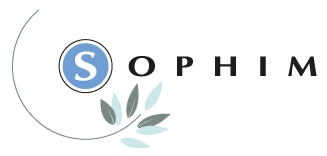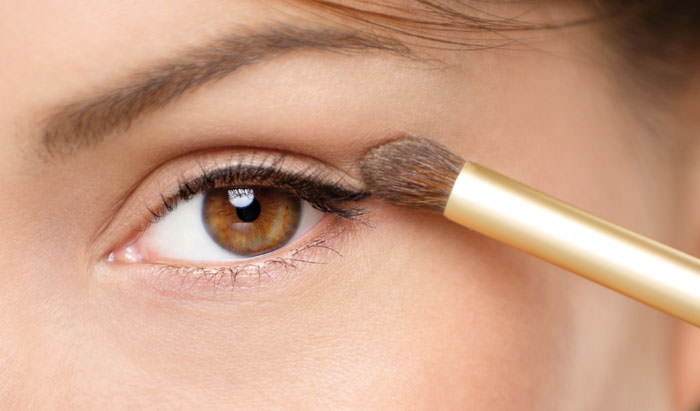Natural waxes used in cosmetics can be of different origins:
- Mineral: extracted from the subsoil like minerals, but formed from organic molecules; during the distillation of crude oils, a section corresponding to paraffins and waxes is obtained in a temperature range from 400°C to 500°C. These are saturated hydrocarbons with a carbon number between 18 and 40 (or even 50 or 60). Waxes have long, branched chains that give them a microcrystalline structure. Paraffins have slightly shorter, linear (unbranched) chains, giving them a macrocrystalline
- Vegetable:these are esters of fatty acids and fatty alcohols. Natural fatty acids are straight-chain carboxylic acids, saturated or unsaturated, the most important of which contain 12 to 22 carbon atoms in even numbers. Several data characterise natural waxes and provide information on their composition, such as the acid number, the saponification number and the iodine number. The most commonly used vegetable waxes in cosmetic formulations are Carnauba, Jojoba and Candelilla waxes.
- Animal: the most commonly used wax in cosmetics is beeswax. Beeswax is composed of approximately 71% esters, 15% long-chain linear hydrocarbons, 13% free acids and 1% free alcohols. It has an acid number of 15-23, an iodine number of 6-12 and a saponification number of 85-105.
Waxes are widely used in many applications because they are multifunctional: as emollients, texturisers, and thickeners. In the same way as cosmetic vegetable butters, protectors, etc., they reinforce the stability of cosmetic formulations and improve their sensoriality.
The melting point of waxes used in cosmetic formulations is very important and determines their behaviour; the higher the melting point of a wax, the more texture and consistency it will provide, whereas a wax with a lower melting point will provide more emollience and less texture.
Beeswax
Beeswax or Cera Alba is produced by honey bees. They metabolise the honey in fat cells. The newly produced wax is usually colourless, but depending on the flowers from which the honey is made, the bees that produce it, and also the presence of other bees in the hive that may contaminate the wax with other pollen, beeswax can have different colours ranging from white to yellow or brown.
Depending on its temperature, beeswax can have two different textures: hard and brittle when cold, and soft when hot.
Beeswax has many advantages when incorporated into cosmetic formulas: it prevents separation in the oil phase of the formulation, and is a thickener that adds structure to the final product.
Beeswax has various properties that moisturise and soothe the skin. It is an excellent ally for irritated skin, for example, or for damaged hair thanks to its nourishing action.
Beeswax is a precious ingredient with multiple benefits but it is an ingredient of animal origin. As the demand for more vegan products increases in the cosmetics industry, formulators are looking for alternatives to animal-based ingredients.
Candelilla wax
Candelilla wax comes from the leaves of a small tree in the Euphorbiaceae family. It is native to Mexico and southwest Texas. Its name comes from its candle-like stems, covered with a waxy texture. During the rainy season, candelilla produces small pink flowers. This plant is very hardy, and has an interesting protective system: the sap of this small tree covers the stems with wax during the dry season to prevent evaporation, which allows the plant to survive in difficult conditions.
Candelilla wax is a good ingredient for formulations as it is also a thickening agent. It is known to have an influence on the viscosity of the formula and is a good emollient. This wax has good binding properties: it is an effective emulsifier of ingredients and can easily be added to a formula.
Candelilla wax has many properties, offering various possibilities for its use in cosmetics. It is mainly known for its moisturising properties, and provides the spreadability of the formula. It is also a good ally of sensoriality because it has a firming action and brings structure to make-up products such as balms or lipsticks.
This plant-based wax is an interesting but versatile ingredient, and its supply is uncertain as it is subject to environmental and political conditions.
Carnauba wax
Carnauba wax comes from the leaves of a palm tree, Copernicia Prunifera. It is native to the north-eastern region of Brazil. This tree is said to be the “tree of life” because of the many possibilities it offers the people who cultivate it. The Copernicia Prunifera is also the symbol of a specific state in Brazil: Cearà. This palm can live for two hundred years and is also known as the “carnauba palm”. It is very adaptable and can spread over large areas, although it is a species endemic to this part of the world. It has a sort of waxy coating on its leaves, which is harvested to become carnauba wax.
Carnauba wax has similar properties to other plant waxes such as emollient properties. In addition, it has hypoallergenic properties, provides a glossy finish to the formula and is used in many applications, from skin care to make-up products, such as foundations
Sunflower wax
Sunflower wax is derived from sunflower seeds (Heliantus annus) which are pressed into sunflower oil. Commonly used as frying oil for cooking, sunflower oil is also used in cosmetics, as an emollient or as a source of sunflower wax.
Sunflower wax is used in cosmetics in the same way as carnauba and candelilla wax for its thickening and structuring properties, but also as an emollient. Its various applications allow formulators to use this ingredient in their make-up formulas, mainly for lipsticks or mascaras for example.
Sustainable waxes
Our mission as a manufacturer of natural alternatives to synthetic ingredients is to offer natural substitutes to help you bring more naturalness to your formula. As well as petroleum jelly substitutes and silicone alternatives, Sophim also offers natural waxes, substitutes for synthetic waxes, and non-animal derived ingredients. We want to create an opportunity for formulators to make a vegan-formula claim [free from animal derived ingredients].
Our Phytowax is derived from olive, which secures the supply:
- Sourcing plants such as candelilla and carnauba is more dependent on the influence of climate, which can reduce the quantities harvested. In addition, the political environment can have an impact on supply. As a result, the prices of these raw materials can be much more volatile than those of olives. In contrast, the olive tree is very resistant to harsh weather conditions, requires little water resources, and our suppliers practice traditional harvesting to preserve the integrity of our ingredients.
- Local sourcing: our suppliers’ production sites are located in the Mediterranean basin, close to our production sites, and allow us to preserve the quality of the original resource, the olive, while reducing the carbon footprint of our ingredients.
Do not hesitate to contact us for more information







